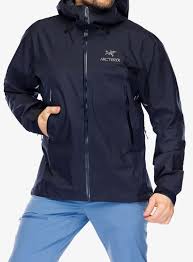Arc’teryx: Pioneering Outdoor Gear for Adventurers

Introduction
Arc’teryx, a renowned Canadian brand, stands at the forefront of outdoor apparel and equipment, renowned for its commitment to innovation and quality. Established in 1989 in North Vancouver, the company has grown from a climbing gear manufacturer to a global leader in outdoor gear, producing everything from jackets to climbing equipment. The relevance of Arc’teryx today lies not just in its high-performance products, but also in its ongoing efforts toward sustainability and ethical manufacturing, crucial topics in today’s environmentally conscious market.
Innovative Products and Technology
Arc’teryx is celebrated for its cutting-edge technology and design, which meets the demands of extreme outdoor activities. Their products, such as the Alpha SV jacket and the Atom LT hoody, are engineered using advanced materials and meticulous construction techniques. Waterproof, breathable fabrics and down insulation are just a few examples of the innovative technologies employed in their offerings. This constant evolution helps outdoor enthusiasts face the elements with confidence, contributing significantly to the brand’s loyal following.
Commitment to Sustainability
In recent years, Arc’teryx has intensified its efforts toward sustainability, recognizing the impact of outdoor activities on the environment. The brand has implemented responsible sourcing processes, focusing on materials that minimize ecological damage and ensuring their production is ethical. Their “ReGear” program encourages customers to repair and recycle their gear, promoting a circular economy in outdoor apparel. As climate change concerns rise, consumers are increasingly drawn to brands that prioritize sustainability, making Arc’teryx’s commitment a crucial aspect of its brand identity.
Engagement with the Outdoor Community
Arc’teryx doesn’t merely focus on sales; the company fosters community engagement by sponsoring events and initiatives that promote outdoor activities. Through its various collaborations and partnerships with climbing and hiking organizations, Arc’teryx supports conservation efforts and encourages individuals to explore the natural world responsibly. This connection with the community enhances its reputation and strengthens customer loyalty.
Conclusion
As Arc’teryx continues to innovate and lead in the outdoor gear market, its commitment to quality, sustainability, and community engagement solidifies its position as a favorite among outdoor enthusiasts. As consumers become increasingly aware of environmental impacts, brands like Arc’teryx are poised to thrive by aligning their missions with the values of their audience. The future appears bright for Arc’teryx as they gear up for new challenges while striving to protect the planet.









